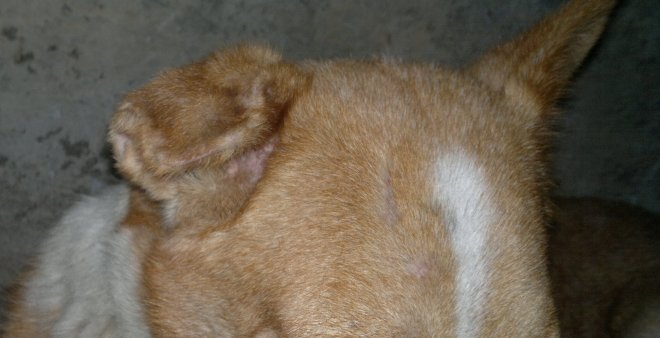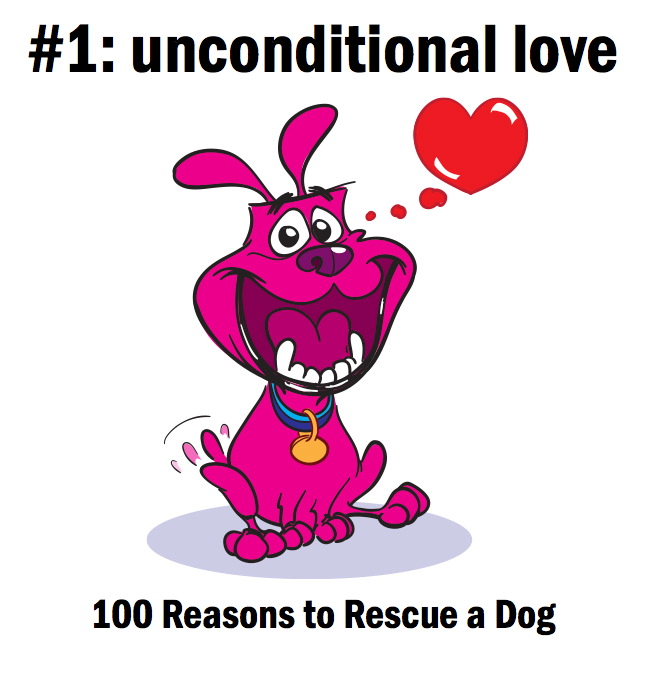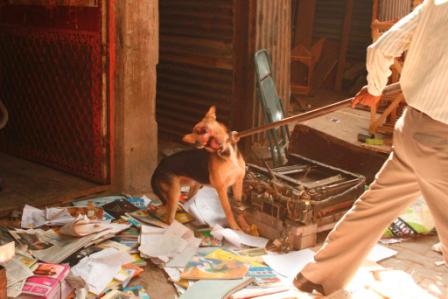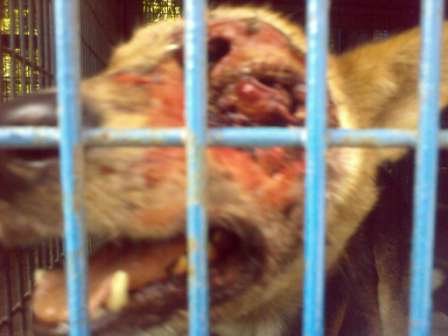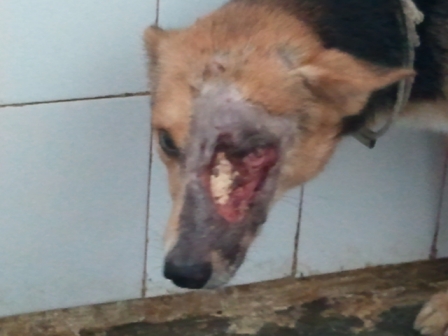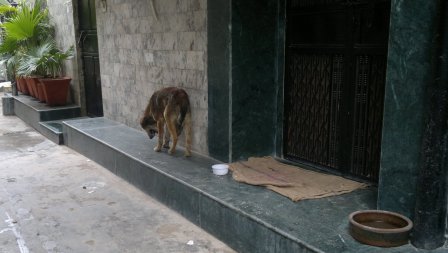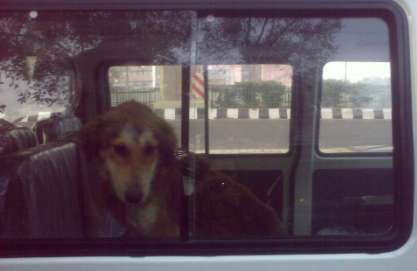By Vasudha Mehta ‘Jaagruti’, A visit to PAWS (Plant and Animals Welfare Society), Thane
This is a month overdue report of my February 2011 visit to PAWS in Thane, an animal rescue and welfare organisation located in the Dombivli East, a suburb about 70 kms from Mumbai.
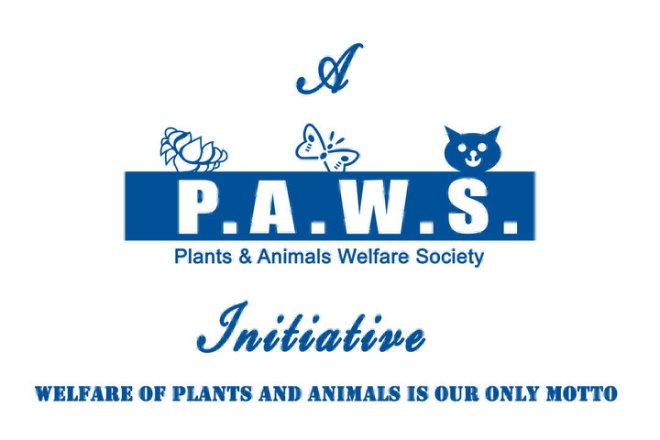
PAWS (Plant and Animals Welfare Society), was founded in 2001 by the young and dynamic Nilesh Bhanage and his college friends. However the journey began three years earlier in 1998, when Nilesh first saw an injured pigeon on his rooftop, his eye was hurt and crows were attacking that helpless pigeon. Nilesh and his friends intervened and rescued that pigeon, but even then they were clueless on how to treat that bird or the nearest place where they could take it to where it could be treated. It was then that Nilesh’s eldest cousin brother who runs a Photo Studio shared with him the details of a young lady named Anamika who used to come to this photo studio to get her photographs featuring animals developed from here. Following this, Nilesh decided to take that pigeon to Anamika’s place and that was the beginning of a new chapter in Nilesh’s life and in the life of many an animals in need in and around Dombivili.
Nilesh shared that, “Anamika was the one who taught me first aid for animals. The other lady that I am inspired by is Goodicia Vaidya who is now the Vice President of In Defence of Animals-Mumbai and who in 1998-99 used to drive an Animal Ambulance from Dombivli to Mahalaxmi, distance of 90 kms one way and back every day tirelessly helping rescue animals in need”.
PAWS was formally registered in 2001 and it got a lease of life when Ahmednagar SPCA donated its ambulance to PAWS in the first formal year of its operations.
The journey thus far
In the world of animal welfare that I had closely observed as a volunteer and a working professional with this sector (which I pursued for about 3 years-2006 to 2008 after I finished studies), the thing that struck me most hard was that sadly, most Animal Welfare Groups don’t work together, there is too much infighting and back-biting that it can easily make a genuine animal lover feel disillusioned and heartbroken. But Nilesh and his team at PAWS were for me a ‘blessed’ exception to what I had seen and experienced thus far.
I first met Nilesh at the Asia for Animals Conference held in Chennai in 2007 and what struck me were his unassuming nature and modesty and his ever-so-willing intent of helping and guiding other groups and people like me who are keen to do more for animals. Also, what impressed me were Nilesh’s extremely professional and transparent ways of operating PAWS, his effective media outreach and awareness initiatives, the timeliness of PAWS newsletters and stories of the month, the transparency and accuracy with which he shared the figures of animals rescued, treated, released, vaccinated and even those that have died.
The fact that PAWS doesn’t have an animal hospital of its own has not been a deterrent in their efforts to help animals as Nilesh works with a tight knit staff and team of volunteers at PAWS and believes in administering on the spot first aid treatment for animals, wherever possible and for those who are severely injured, the PAWS ambulance takes on the onus of dropping the animal, domestic or wild at the designated shelters nearby. And once an animal is dropped for treatment at a veterinary hospital or shelter, Nilesh at PAWS ensures that he keeps following up on the animal’s health status and have it released when the animal has recovered and is in good health. By tying up with veterinary units doing Animal Birth Control programmes I nearby major districts, PAWS has also ensured that they get as many dogs in their area of operations sterilized over the years and all these first aid, and treatment based pick and drop services are catered to by the PAWS team of two ambulances and trained drivers cum paravets. PAWS runs two ambulances, Nilesh oversees the operations of the ambulance operating in Dombivili, Kalyan and Ulhasnagar and Anuradha Ramaswamy, a founder trustee of PAWS since its inception oversees the working of the PAWS ambulance in Thane, Kalwa and Mumbhra regions.
When Nilesh officially registered PAWS as a charitable society and trust in 2001, till uptil July 2010 (i.e. last year), Nilesh was doing a regular job in Mumbai as well besides managing PAWS and it is this that was most inspiring to us. For he wasn’t drawing any income from PAWS and its operations rather spending whatever he had personally, be it time, effort or money to still run an effective animal rescue organisation that was volunteer-driven.
And the above is what we at Jaagruti are also successfully aiming to do, thus despite me and my brother having regular full time jobs to cater to, we started ‘Jaagruti’ formally in end of 2009 and do try our best to spread awareness on these issues, treat and rescue as many animals in our area as possible while facilitating those we can’t besides hosting a 24 hour helpline of ours to attend to any and every animal and environment based query that could help guide a person to care for animals and help the environment in their own little ways.
Now, Nilesh works as the Manager of the India National Rabies Network with the Worldwide Veterinary Services and this job is helping him drive his income from also doing what he likes doing, which is helping animals besides devoting all of his attention and time to managing and expanding the operations of PAWS.
Staff and Volunteers at PAWS
PAWS has a network of 300 registered members connected via a google group and off these about fifty are dedicated volunteers who take turns to contribute their skills, be it rescuing all kinds of birds and animals, administering them first aid, designing brochures and other awareness literature and hosting fundraisers and awareness events etc.
PAWS looks after its volunteers by administering them preventive anti-rabies and tetanus vaccinations as part of its ‘Protect the Protectors’ vaccination drive, the volunteers are reimbursed their vehicle expenses post submission of the animal rescue form and the receipt from the animal hospital where the injured animal was dropped post rescue, the top 20 volunteers who help in rescuing animals are also aided by PAWS with a Medical/Health insurance policy and besides this PAWS has distributed First Aid kits to 5 volunteers in Dombivili who help out with Animal First Aid regularly and their medicine stocks are also replenished as and when they run out of it.
How we at Jaagruti wish that there were dedicated volunteers like this around in Delhi too! But I guess a big city like Delhi has its own problems where volunteering is a matter of convenience and not commitment, but we do hope things will change and one day, all other cities would also have dedicated volunteers like the ones PAWS can proudly boast off.
I also had the opportunity to participate at a Vaccination Drive organised at Kharegaon, Kalwa (Supervised by PAWS trustee Anuradha) in which with the help of 8 volunteers, lead by the just graduated Veterinary Doctor Anahita, 55 street dogs were administered Anti-Rabies vaccines, many animals were administered first aid, and many little pups dewormed. PAWS organises such Anti-Rabies vaccination camps every weekend in various areas of Thane District along with community support and help spread awareness amongst community residents as well on how best to live in harmony with street animals and look after them.
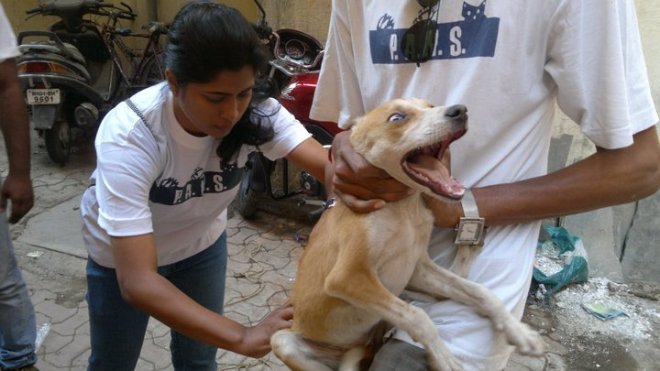
Dr. Anahita, a just graduated veterinary student and PAWS volunteer helps vaccinate a street dog during the vaccination drive at Kharegaon on 20 February 2011 (Photo Credit: Vasudha Mehta/ 'Jaagruti')
Other than the volunteers, the full-time staff employed by PAWS includes two part time office assistants, two ambulance staff who act as both drivers and paravets and two rescue staff, both of who are young boys from orphanages housing kids orphaned in the Latur earthquake of 1993.
PAWS has a philanthropic side to its activities in the domain of ‘human welfare’ as well as we learnt that PAWS donated its first ambulance received in 2001 from SPCA Ahmednagar, which happened to be a matador to St. Josephs’s School which happens to be a schools nearby PAWS office where children with special needs are taught alongwith ‘normal ‘kids uptil Class 4. Besides this, PAWS regularly ties up with societies working with blind and under-priveleged children to organised joint fundraising activities through merchandize made by these societies.
Often, people like Nilesh and us at ‘Jaagruti’ and many who work for animal welfare are asked this question of why we care for animals when there are so many humans suffering? And to this my answer is that caring for voiceless animals doesn’t mean that we care less for humans, infact the activities done by PAWS for children with special needs and other societies working with orphaned, disabled and underprivileged children only goes to prove that people who think and care for animals and their suffering have a very high empathetic quotient, they are sensitive people who care equally deeply about humans and their suffering, it is just that they prefer volunteering their hands-on efforts to animals, because there are in any case man few people fighting for animals and their rights to live lives of respect and dignity.
Family
For anyone working for the cause of animals or for that matter, any alienated social cause, the support extended by ones’ immediate and extended family is of extreme significance. For working selflessly and tirelessly for a social cause takes away more than your time, it draws on your personal space and even your mental and emotional energies extensively. I say this for me and my brother-Vivek too for we couldn’t have continued with our and Jaagruti’s efforts had it not been for the immense moral and priceless support we had received from our mother. A strong and supportive family surely helps retain our state of mental and emotional well-being, staying grounded, practical and should I say ‘sane’!
And this is what prompted me to understand how Nilesh’s family thinks about the work he and PAWS does? Nilesh is the youngest of 7 cousin brothers (and a sister) in his big Maharshtrian family. His parents work in the Railways and are now very supportive of the work he and PAWS does.
Though initially Nilesh’s parents found the animal rescue work he did a bit strange! When I asked him how their perception about his and PAWS work changed, Nilesh shared, that, “One day my mother went to the vegetable seller in the nearby market to buy vegetables and it was then that, the vegetable seller and his wife spoke highly of the work PAWS does as we had once helped get their pet female dog sterilized and treated for which they week extremely grateful to my mother. That bitch of the vegetable sellers is now over 10 years old, hale and hearty. That incident changed my mother’s perception. Many such incidents followed wherever she went in our area and soon she and my father started feeling proud of what I did through PAWS.”
Nilesh’s family is extremely supportive of his efforts; his parents live in the floor beneath his in the building named ‘Savitri Sadan’ after his paternal grandmother. ‘Savitri Sadan’ was once a the big family home of Bhanage family but about a decade back, the family decided to convert it into a building and the different brothers moved into different apartments and floors in the same building. But in this age of nuclear families and rifts in relationships, the Bhanages are indeed a family that stays and prays together as they keep teeming up and meeting for each of the festivities and little joys the family celebrates. The whole family also extends its support to PAWS by housing injured animals received from volunteers in their premises when Nilesh is not around.
*Manasi and Dishita:
In the world of animal welfare that I had seen thus far, many people are not married and even if they are, their marital lives are far from being ‘ideal’, but by God’s blessings, Nilesh and his wife Manasi are a ‘super couple’, devoted to the cause of animals and their welfare.
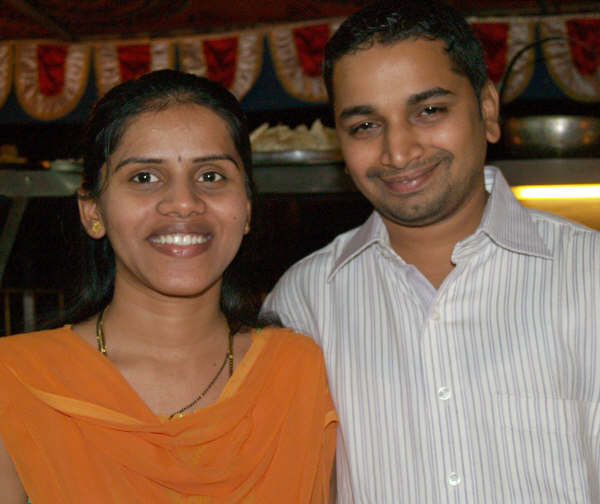
Manasi and Nilesh Bhanage
Before meeting Manasi, I had always imagined that Nilesh would have met Manasi while rescuing an animal somewhere or the other, but to my surprise that was not the case. Nilesh shared that his meeting Manasi was purely ‘divine intervention’ as they met in a Tourist Bus in 2006 when Nilesh was travelling with his friends on a short pilgrimage trip to Sai Baba of Shirdi. Manasi was in the same bus taking her grandmother to the holy place. Manasi was not an animal lover or animal welfare person to begin with, she was an HR Management Professional working in a Mumbai based company; but as Manasi shared, “I always knew rescuing animals was a way of life for Nilesh. Even in our courtship period, I was truly amazed by all that he had accomplished and aimed to do at such a young age for animals and PAWS uptil then”.
But Manasi’s life was to change as well, when she started accompanying the PAWS ambulance on its daily rescue calls following the birth of their daughter Dishita which had prompted Manasi to leave her regular job as well. As Manasi saw the suffering of animals on the street and the tender affection and commitment with which Nilesh and the PAWS team nursed them back to fitness, Manasi was gradually inspired to do her bit, she and she surely has done more than her bit and her efforts are only growing by the day in aiding Nilesh in all his efforts with PAWS.
Manasi and Nilesh complement each other’s skills tremendously in life and also while working for PAWS. While on one hand, Manasi’s strong interpersonal skills help her organise and arrange for funding to sustain PAWS activities, her HR skills also help calm down (and retain) the staff and volunteers who may sometimes feel overwhelmed by Nilesh’ strong and tireless work ethics and his methodical attention to details, on the other hand, Nilesh’s vast experience in animal welfare and his global network coupled with his diligence, determination and professionalism have helped ensure that PAWS has continued to remain the lifeline for the animals living in the suburbs of Mumbai.
And expectedly so Nilesh and Manasi’s two year old daughter is following in her parents footsteps, she is not afraid of animals and keenly observes her father rescuing and treating all animals, be it birds, dogs, cats or even snakes! Manasi’s companion these days are their pet cats Bitty and Kitty. Kitty who happens to be adopted and blind is about an year old and Nilesh adopted her the moment he first received an SOS adoption message about her many months back, Kitty has learnt to find her way in the house, the PAWS office and the accompanyiong staircase. She is extremely lovable, gorges on her favourite catfood ‘Drools’, is potty-trained and now also sterilized and Kitty with Dishita are surely, by the way it seemed, are both adorable darling apples of Manasi’s eyes too!

Dishita Bhanage: 'Start them young'
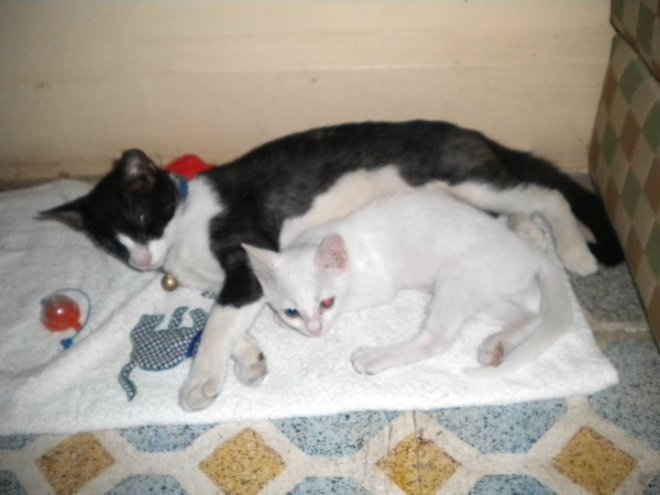
Nilesh's pet cats, Kitty (Blind and back & white) and Bitty (the white one)
Nilesh’s 16 year old pet dog Raju, who passed away in December 2010, was Dishita’s first introduction to animals, she used to even sit on his back and take rides on him and Raju patiently let her do all of it as Manasi watched in awe! Raju was a special dog in Nilesh’s life too; his photo now adorns a prime place in the walls of the living room of Nilesh’s house. “Raju has seen both me and PAWS grow, he was 3 years old when I started working for animals in 1998 and had been with me and PAWS for 13 years thereafter. He has been with me and my family through everything and we all miss him and his presence in our lives and the void will remain so always.”…Nilesh also shared that in his younger days, Raju used to walk till the local railway station to drop off his parents as they left for their work in Mumbai early morning and then used to return back home on his own without getting into a fight with any of the dogs along the way!
The journey ahead….
PAWS formally got access to a Rescue Centre of its own last year thanks to the generosity of Mrs. Maneka Gandhi of People for Animals which operated this premises in 1994-95 and the place was lying unused ever since. This rescue centre is located at Murbad, about 50 kms away from Dombivili .
With this PAWS Rescue Centre at Murbad nearing completion and renovation, Nilesh aims to generate more funding resources to make the Rescue Centre sustainable. Like us at Jaagruti, Nilesh agrees that Rescue centres should only be aimed at treating animals to fitness and then releasing them back in their natural surroundings or where they were picked up from. “Only those animals who are so badly handicapped that they can’t fend for themselves should be housed at a shelter for life”. Says Nilesh and we at Jaagruti second that, for if animal shelters keep on housing and feeding healthy animals then according to us at Jaagruti also this habit of ‘hoarding and collecting healthy animals at shelters’ robs an injured animal in need of much needed space and the resources spent on feeding and fattening healthy animals at shelters can be best spent on treating many an injured animal.
“My aim now is to start an Animal Birth Control Unit and a full-fledged veterinary hospital at the PAWS Centre in Murbad. It will be a long drawn process but I am sure we will be able to do so”, shares Nilesh. Nilesh’s immediate goal is to recruit honest staff to support housekeeping and medical needs of animals at Murbad and generating resources for the same is something Manasi plans to take on with gutso as she plans a non-profit event management company of her own, that could help PAWS to generate funds for its operations through event-based awareness and fund-raising activities.
We at Jaagruti wish them and the team at PAWS the very best in all their efforts and promise hereby to continue to support them in whatever way we possibly can.
We also express our deep gratitude to Nilesh and Manasi for making these three days of mine spent with them one of the most enriching learning experiences of my life, which will for sure continue to inspire us all at Jaagruti in our efforts as we aim to expand our reach and efforts from a modest beginning thus far. A big thank you!
If you want to learn more about the work PAWS does and help support Nilesh and his team in their efforts, please click on www.pawsasia.org.
If any one of you reading this can draw any lessons and inspiration from this article penned by us, this whole effort of ours at Jaagruti will further strengthen our objective of informing, sharing and inspiring as many people as we can about animals, the people who work for them and make this place a kinder and a better place to live in!
– Vasudha Mehta (vasudha@jaagruti.org)


